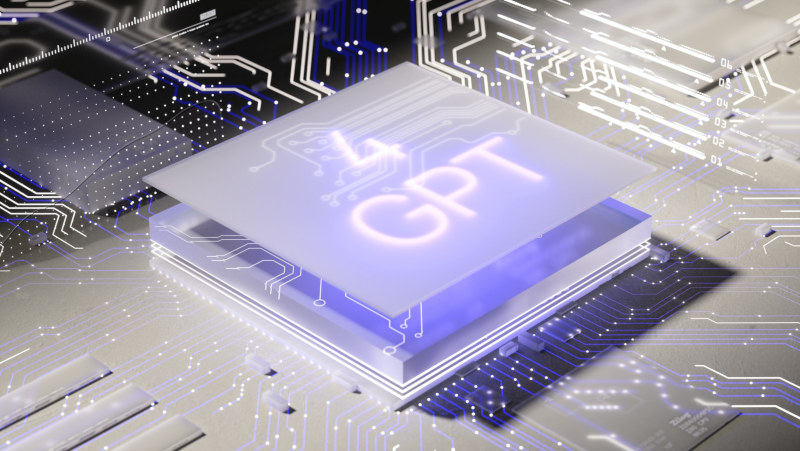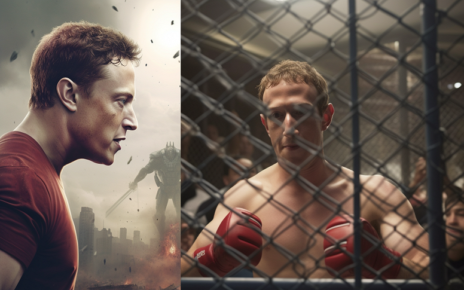Based on artificial intelligence algorithms, the ChatGPT application can be perceived in two ways: as a technological breakthrough and as an object that has gained viral popularity overnight. Its impact on the public now depends only partly on the startup that developed the service, OpenAI, and the real beneficiary is Microsoft, which is clearly going to dominate the AI space – or has already done so.
The neural networks underlying ChatGPT operate in the Microsoft cloud infrastructure – the company is the largest investor and key technology partner of OpenAI. And Microsoft is now predominantly responsible for implementing the ChatGPT business model. Meanwhile, OpenAI, the most popular startup in Silicon Valley, is now more like a subsidiary of the software giant.
A year ago, Microsoft’s presence in the field of AI was not particularly noticeable – Google talked more about this area, but were in no hurry to adapt their research to commercial products. Microsoft, however, with its arrival here took a direct course to extract maximum profit. GitHub Copilot, a coding tool, has attracted more than 10,000 companies as customers. The next step was the Bing search engine with a chatbot, and then the Copilot features began to penetrate into the Microsoft 365 office suite and Windows OS. “There is no point in promoting technology for the sake of technology. All these technological breakthroughs are only useful when they do something in the real world, ”commented the company’s position on its head Satya Nadella (Satya Nadella).
The company is yet to reveal pricing for upcoming products under Copilot, but it’s unlikely there will be anything free. The GitHub version starts at $10 per user per month — assuming office counterparts get the same price tag, Microsoft will increase its annual revenue by $48 billion in the next four years just on these solutions, analysts calculated. And by 2027, Microsoft’s revenue from products based on OpenAI technologies will grow to $99 billion. Investments in OpenAI promise to pay off with interest: since 2019, the corporation has invested $13 billion in the startup, and since the release of ChatGPT, its share price has grown by 30%.
Microsoft management knows firsthand what it takes to be involved in advanced technologies. The corporation’s executive vice president, Scott Guthrie, compared its entry into AI to the era of Windows 95, when Americans lined up at stores late at night to buy the OS. As a result, Windows 95 became not so much a technological breakthrough as a means of dominating the market – a decade later, Microsoft was the developer of the main software platform for the PC, and she had to settle this issue with the US government under antitrust laws. Now the strategy is mostly the same: implement AI everywhere and capitalize on it.
Microsoft has been working on AI technologies since before the advent of Windows 95, but each of its major attempts to implement them has ended in failure. In the 1990s, Skrepysh (Microsoft Office’s virtual assistant) could interrupt a user’s work, report to them that they were writing a letter, and offer their help. In 2016, the company launched the Tay chatbot, which was originally meant to act like a teenage girl on Twitter. The experiment had to be interrupted a day later, when the AI turned into a “troll” with Nazi manners.
Microsoft’s main AI work has been academic in nature. The corporation had three divisions with different leaders – their projects were not related to each other, and they had no business plans. But there were $10 billion in costs that once struck top management, and then it became clear that it was time to change something. At that time, the largest players in the field of AI were the Chinese Baidu, as well as the American Google and OpenAI. Baidu, which owns China’s largest search engine, simply couldn’t avoid diving into this direction. Google began to seriously study the technology of unmanned vehicles and absorbed the startup DeepMind. The exception was Sam Altman and Elon Musk’s OpenAI, with promising demos and no funds to keep going. In other words, OpenAI needed a partner, and Microsoft needed to catch up with Google.
Microsoft has never trusted third parties to develop large solutions, and Altman said he needed $1 billion for a relatively tiny lab. But behind him was a revolutionary idea – the so-called “transfer learning” (transfer learning). Back then, most AI startups were only trying to teach a computer a single, narrow task. The idea behind transfer learning is To create a model for a single task, such as synopsis of lyrics, and then apply its knowledge to new but somewhat similar tasks, such as songwriting or travel planning. And over time, the range of training information for the model expands.
As a result of the transaction in 2019, Microsoft received the exclusive right to host OpenAI projects in its own cloud infrastructure, as well as the right to sell OpenAI services to its own customers. The startup also received the technical means to implement its projects – a supercomputer with tens of thousands of high-performance NVIDIA accelerators, configured according to OpenAI specifications. Then the capabilities of OpenAI models were limited: the GPT-2 neural network could analyze a piece of text and add a few sentences, but it didn’t get to the release – it seemed that the model could only compose spam and phishing emails. And the researchers themselves did not understand what a commercial product could be. Things began to change in 2021, when a new version of the model formed the basis of the GitHub Copilot service – it looked at a piece of code and suggested subsequent lines.
By that time, Microsoft founder Bill Gates had left the corporation’s board of directors, but his opinion still mattered. And he opposed cooperation with OpenAI, considering GPT nonsense. Gates demanded that a demonstration be arranged for him, which would prove that the AI model itself understands what it is talking about. He added that if she passed the Advanced Placement Biology exam, he would be impressed. Late last year, Microsoft Vice President Scott Guthrie, CTO Kevin Scott, and Sam Altman came to the Gates mansion to demonstrate the GPT-4. The neural network not only passed the biology exam, but also passed Gates’ own test – she was forced to communicate with users as if with the parents of a sick child, and the Microsoft founder was struck by the ability of ChatGPT to show empathy.
In the following months, Microsoft negotiated with OpenAI to invest an additional $10 billion, much of which should be returned to the investor. Altman’s team needed significant resources to launch a series of projects based on GPT-4. The first of these was a chatbot for Bing. Microsoft’s search service accounts for 3% of the search advertising market, while Google has 91%. So Bing turned out to be an ideal testing ground with minimal risk, but significant investment. Unlike Apple, it’s not customary for Microsoft to keep future products secret, but this was an exception: only about 15 employees were aware of the new initiative.
The launch of the search chatbot marked a revolution: a search engine that provides its own answers instead of links is an obvious threat to Google. As a result, Microsoft’s shares rose while Google’s shares fell. Google has announced a “red code”, instructing developers to urgently add AI to all products in the coming months. The chatbot helped Bing increase its usage by 15%, which is an impressive result for a market that has stagnated for about a decade. Users weren’t turned off by the bullshit that the Bing chatbot sometimes lashes out at, nor by the sometimes aggressive response to attempts to convict it of it. Microsoft 365 has approximately 400 million paying subscribers, including the world’s largest corporations, military forces and governments. The company’s management does not consider AI malfunctions a problem, emphasizing that its functions in the office suite are called Copilot, that is, “co-pilot”, and they should not be overly trusted.
With the resources of OpenAI at its disposal, Microsoft can rightfully claim dominance in the field of AI, much the same scenario as in 1995. Today, Microsoft software is used in almost every major institution on Earth, and Nadella and Altman have the largest market. It is logical to assume that sooner or later Microsoft, as a senior partner, may try to cross the line, but the leaders of both companies reject this scenario. Altman argues that OpenAI remains largely a stand-alone entity, although he acknowledges that if Microsoft decides to shut down a partner’s servers, OpenAI’s operations will be virtually paralyzed. Nadella emphasizes that there are developers of competing AI technologies in the market – but agrees that Microsoft is the undisputed leader.



